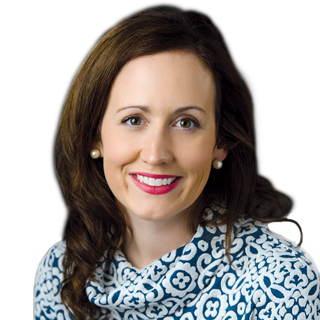
There is a new horse in town and it goes by the name of RCS-1.
Blinders off, it’s now time to jockey up because the Centers for Medicare & Medicaid Services released a new case-mix pre-rule.
In January, we warned you to beware of rehab partners wearing blinders.
Race results are now official as we brace for the next set of potential changes facing the skilled nursing industry.
On April 27, a Summary of Advance Notice was published in the Federal Register titled Prospective Payment System and Consolidated Billed for Skilled Nursing Facilities: Revisions to Case-mix Methodology.
The purpose of this pre-rule is to solicit public comments on potential options for revising certain aspects of the existing skilled nursing facility prospective payment system (PPS) payment methodology to improve its accuracy, based on the results of CMS SNF Payment Models Research.
CMS is seeking comments on the possibility of replacing the SNF PPS’ existing case-mix classification model, the Resource Utilization Groups, Version 4 (RUG-IV), with a new model, the Resident Classification System, Version I (RCS-I).
The rule notes intent to propose case-mix refinements in the FY 2019 SNF PPS proposed rule.
What do providers need to know?
First, the goals for developing an alternative payment system include:
• Creating a model that compensates SNFs accurately based on the complexity of the beneficiaries they serve and the resources necessary in caring for those beneficiaries
• Address CMS’ concerns, along with those of OIG and MedPAC, about current incentives for SNFs to deliver therapy to beneficiaries based on financial considerations, rather than the most effective course of treatment for beneficiaries
• Maintaining simplicity by, to the extent possible, limiting the number and type of elements we use to determine case-mix, as well as limiting the number of assessments necessary under the payment system.
Second, the RCS-1 case-mix will provide a single payment based on clinical characteristics in five areas — 1) PT and OT, 2) SLP, 3) Nursing, 4) Non-Therapy Ancillary and 5) Non-Case Mix)
1) Physical and Occupational Therapy
• Will be assigned to one of 30 case-mix groups.
• Groups are determined by clinical reason (see clinical categories) for the SNF stay; function score based on only the self-performance items for MDS 3.0 Section G in areas of transfer, eating and toileting; and the presence of moderate or severe cognitive impairment, potentially scored using the Cognitive Function Scale (CFS) which incorporates both MDS 3.0 Brief Interview of Mental Status (BIMS) and Cognitive Performance Scale (CPS) scores.
• Clinical categories include: Major Joint Replacement or Spinal Surgery, Other Orthopedic, Non-Orthopedic Surgery, Acute Neurologic, and Medical Management.
2) Speech-Language Pathology
• Will be assigned to one of 18 SLP case-mix groups.
• Group will be determined by clinical reasons for the SNF stay (see clinical categories), presence of a swallowing disorder or mechanically altered diet, and the presence of an SLP-related comorbidity or mild to severe cognitive impairment.
• Clinical categories include: acute neurologic or non-neurologic
3) Nursing
• Will be assigned to one of 43 nursing case-mix groups potentially using the existing non-rehabilitation RUGs for the purposes of resident classification.
• Refinement for nursing in the case-mix model will be appropriate to better differentiate patient specific nursing resource needs.
4) Non-Therapy Ancillary
• Will be assigned to one of six Non-Therapy Ancillary (NTA) case-mix groups.
• Current cost regressions show that certain comorbidity conditions and extensive services are highly predictive of resident NTA costs. Therefore, considerations include basing a residents NTA score on a weighted count methodology.
5) Non-Case Mix
• Covers room and board
• Administrative costs
• Capital-related costs
Third, RCS-1 will likely have impacts on the MDS Schedule.
• Changes to the MDS structure may be simplified with current considerations, including the possibility of using the five-day SNF PPS scheduled assessment to classify a resident under an RCS-I model for the entire Part A SNF stay
• When residents present with a significant change in function, the proposed system is considering permitting providers to reclassify residents from the initial five-day classification using the Significant Change in Status Assessment (SCSA)
• Discharge assessment would likely continue to be required with additions to allow CMS to track therapy minutes across the Part A stay.
• An interrupted stay policy may be considered in cases where a resident is discharged from a SNF and returns to the same SNF within three calendar days after having been discharged, with the possibility of treating the resident’s stay as a continuation of the previous stay for purposes of both resident classification and the variable per diem adjustment schedule
Fourth, modes of care will promote increased individualized therapy treatment
• Concurrent therapy may be limited to no more than 25% of a SNF resident’s therapy minutes and may be therapy discipline specific.
• Group therapy alike may be limited to 25%, which is consistent with the existing limit.
Comments on the rule must be received no later than 5 p.m. on June 26, 2017.
Renee Kinder, MS, CCC-SLP, RAC-CT, served on the Centers for Medicare & Medicaid Services’ panel that considered this rule. She currently serves as Director of Clinical Education for Encore Rehabilitation and acts as Gerontology Professional Development Manager for the American Speech Language Hearing Association.




